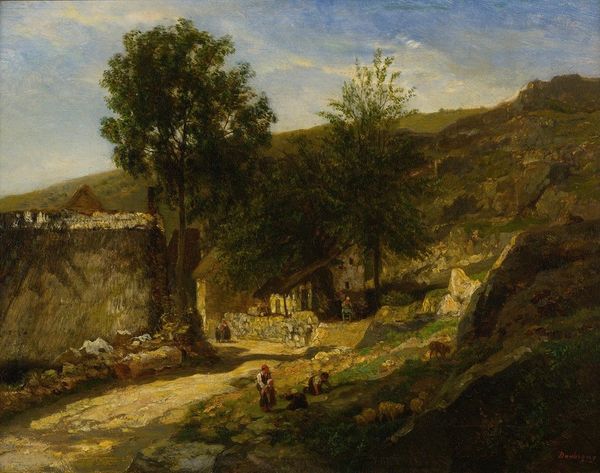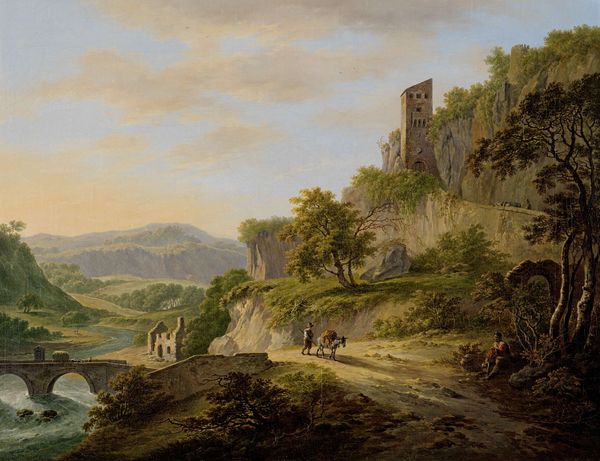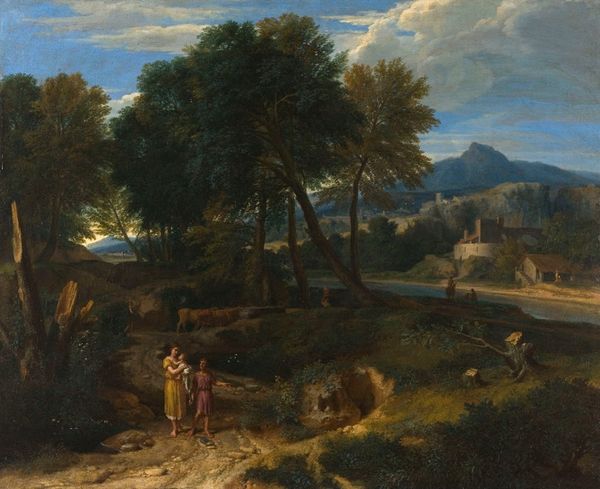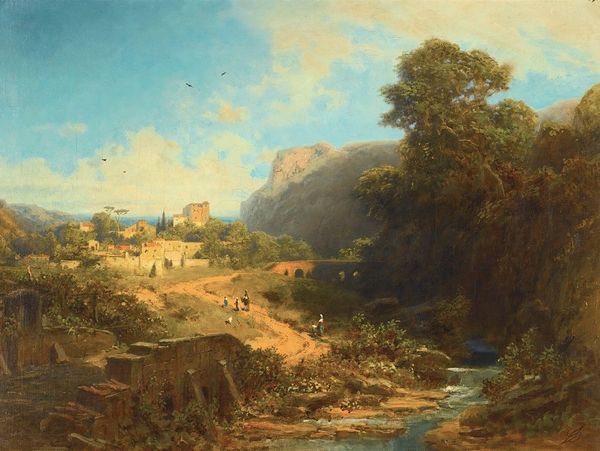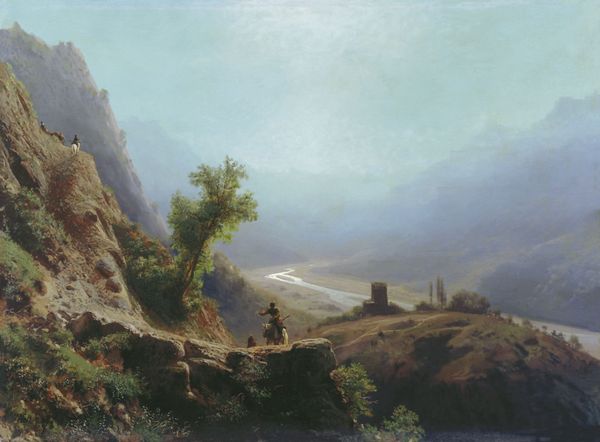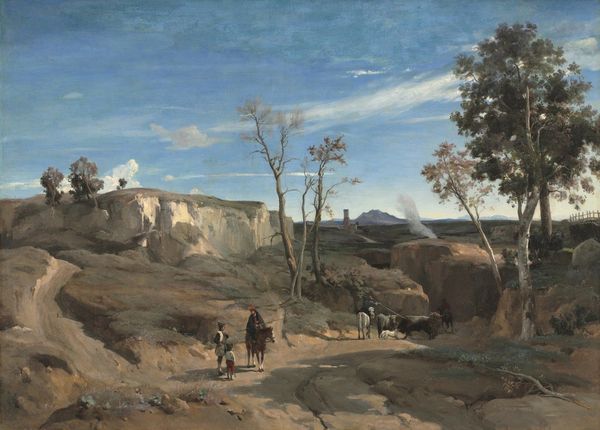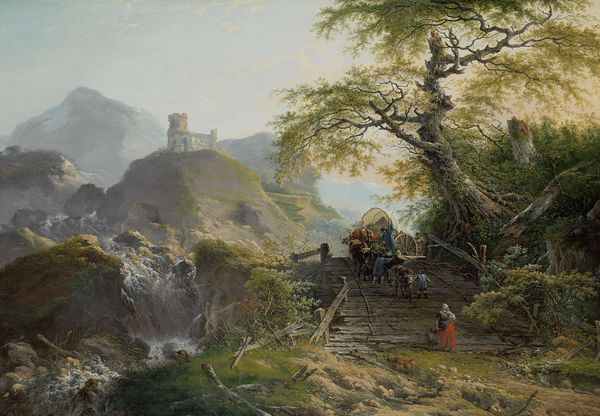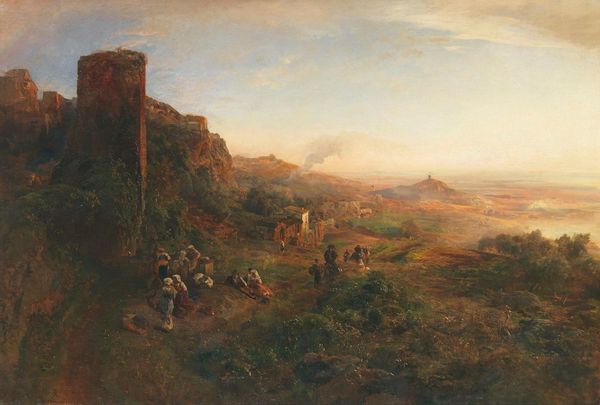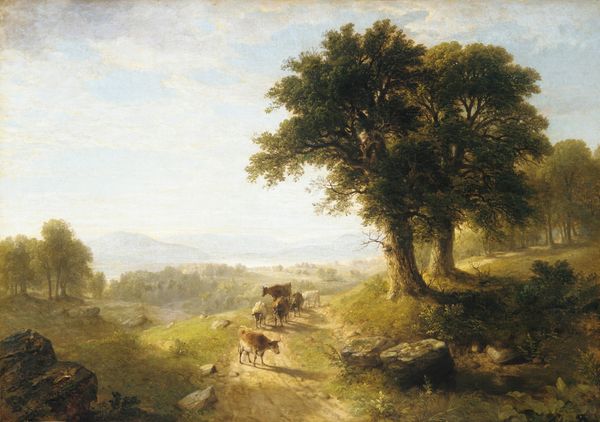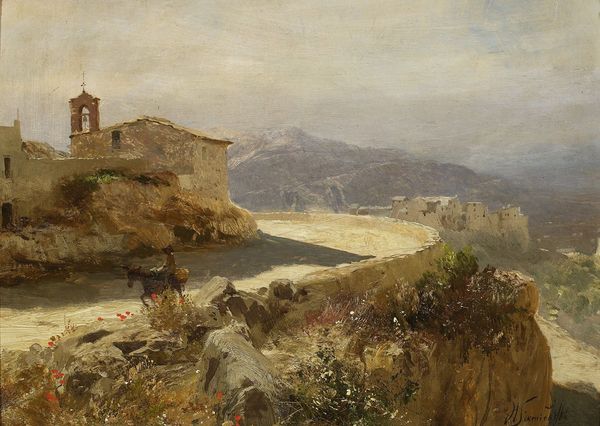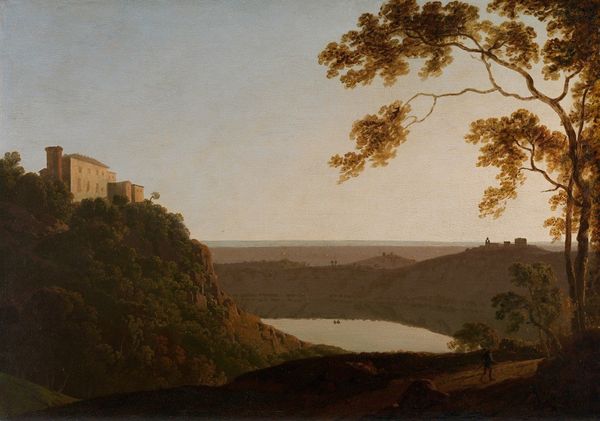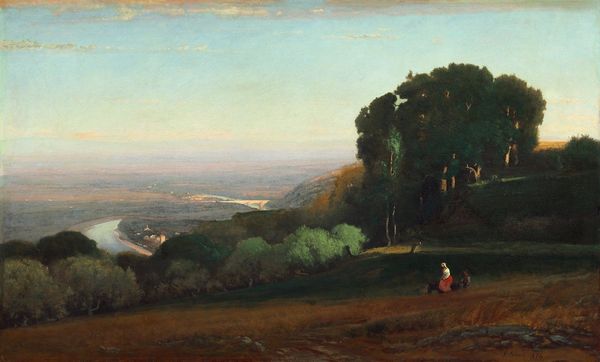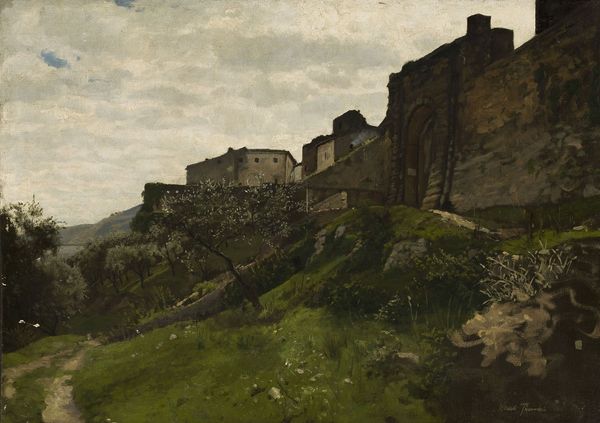
plein-air, oil-paint
#
plein-air
#
oil-paint
#
landscape
#
oil painting
#
romanticism
#
cityscape
#
realism
Copyright: Public Domain: Artvee
Curator: This is "Landscape near Crémieu" by Charles-François Daubigny, likely painted around 1849. Daubigny was a key figure in the Barbizon school, known for painting en plein air, or outdoors, to capture the direct experience of nature. This work, in oil on canvas, exemplifies his commitment to portraying the French countryside with realism and sensitivity. Editor: Immediately, I notice the scale, how the vista shrinks down to these figures on the road. The texture is lovely, those visible brushstrokes—you can almost feel the rough surface of the path. There's a definite romantic element, in terms of showing nature dwarfing people. Curator: That's an excellent observation. While realism was a dominant movement, romanticism’s influence lingered. This piece blends Daubigny's interest in observable reality with a subtle emotional tone. The composition, placing figures and structures against the vastness of the landscape, reflects this. The crumbling structure hints at societal transience against the eternal natural world. Editor: And look at that central figure—possibly a migrant worker—bent beneath their load, heading toward…opportunity? What social strata are being both elevated and potentially exploited in this seemingly bucolic vision? Is this celebration or indictment of country life? Curator: It's fascinating to consider that tension. Daubigny exhibited at the Salons and achieved recognition during a time when rural France was experiencing profound economic and social changes. So to some, his painting represents a conservative impulse, valorizing country life when industry and modernity are really shifting. But on the other hand, he is known to portray it honestly, the difficulty of life, in terms of light, in terms of toil. Editor: Indeed. It raises issues of land, labor, and the way artists can both reflect and influence social perceptions. Beyond the idyllic view, there’s an unspoken story about access, struggle, and perhaps the fading promise of the land. Daubigny does present this narrative with amazing restraint, focusing the perspective beyond just the plight. It has made me think. Curator: His quiet naturalism invites sustained observation and ultimately provides a potent and socially conscious message, so even after all this time, the work still has an enduring, historical and relevant power.
Comments
No comments
Be the first to comment and join the conversation on the ultimate creative platform.
